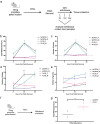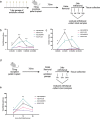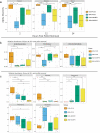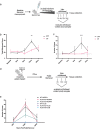The gut microbiome contributes to somatic morphine withdrawal behavior and implicates a TLR2 mediated mechanism
- PMID: 37589387
- PMCID: PMC10438851
- DOI: 10.1080/19490976.2023.2242610
The gut microbiome contributes to somatic morphine withdrawal behavior and implicates a TLR2 mediated mechanism
Abstract
The ongoing opioid epidemic has left millions of people suffering from opioid use disorder due to the over-prescription of highly addictive substances. Chronic opioid exposure leads to dependence, where the absence of the drug results in negative symptoms of withdrawal, often driving patients to continue drug use; however, few therapeutic strategies are currently available to combat the cycle of addiction and the severity of morphine withdrawal. This study investigates the microbiome as a potential therapeutic target for morphine withdrawal, as gut dysbiosis caused by morphine use has been proven to contribute to other aspects of opioid use disorders, such as tolerance. Results show that although the microbiome during morphine withdrawal trends toward recovery from morphine-induced dysbiosis, there continues to be a disruption in the alpha and beta diversity as well as the abundance of gram-positive bacteria that may still contribute to the severity of morphine withdrawal symptoms. Germ-free mice lacking the microbiome did not develop somatic withdrawal symptoms, indicating that the microbiome is necessary for the development of somatic withdrawal behavior. Notably, only TLR2 but not TLR4 whole-body knockout models display less withdrawal severity, implicating that the microbiome, through a gram-positive, TLR2 mediated mechanism, drives opioid-induced somatic withdrawal behavior.
Keywords: Morphine; TLR2; behavior; microbiome; withdrawal.
Conflict of interest statement
No potential conflict of interest was reported by the author(s).
Figures






References
-
- Azadfard M, Huecker MR, Leaming JM.. Opioid addiction. 2023. - PubMed
-
- Ahmad F, Rossen L, Sutton P. Products—Vital statistics rapid release—Provisional drug overdose data. 2022.
-
- Wakeman S. The moral economy of heroin in ‘Austerity Britain’. Crit Criminol. 2016;24(3):363–377. doi: 10.1007/s10612-015-9312-5. - DOI
Publication types
MeSH terms
Substances
Grants and funding
LinkOut - more resources
Full Text Sources
Medical
